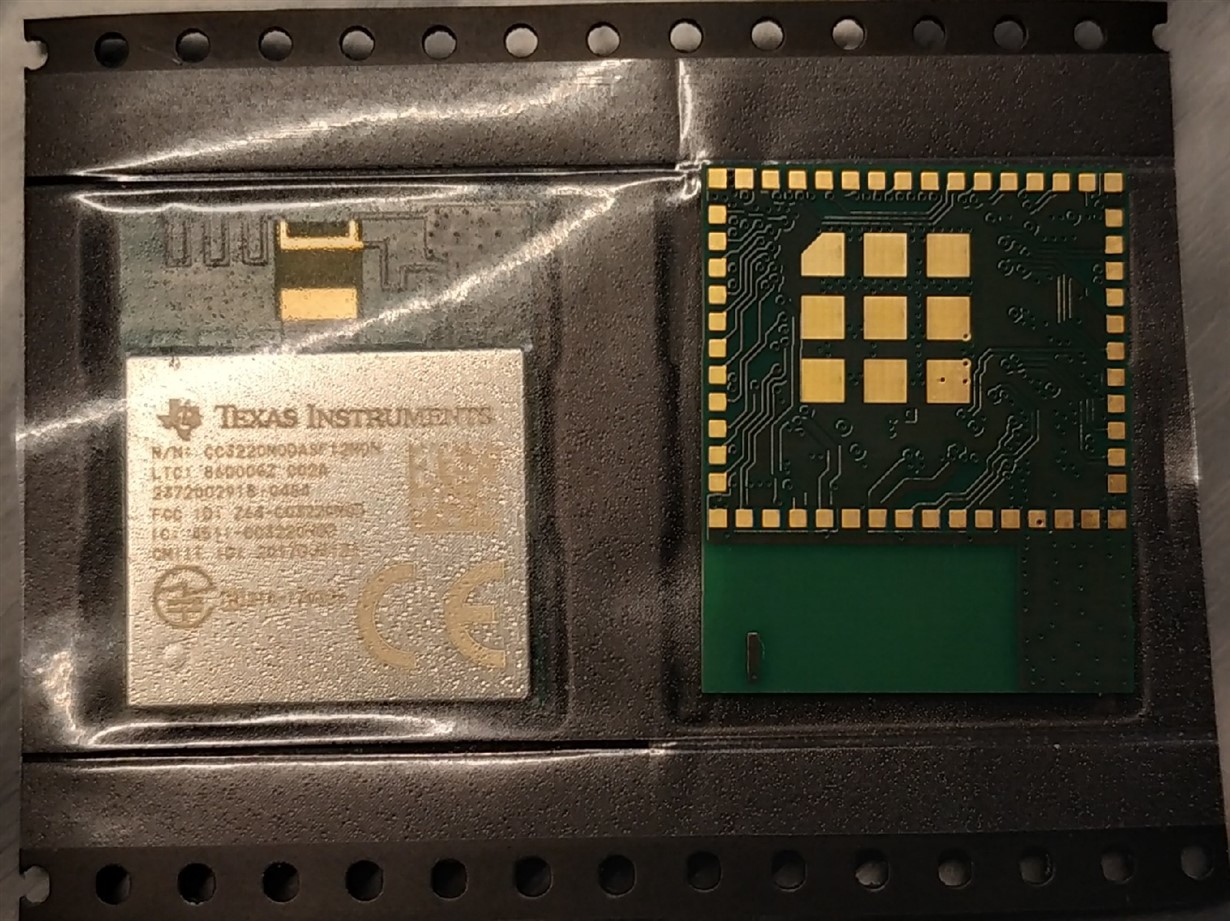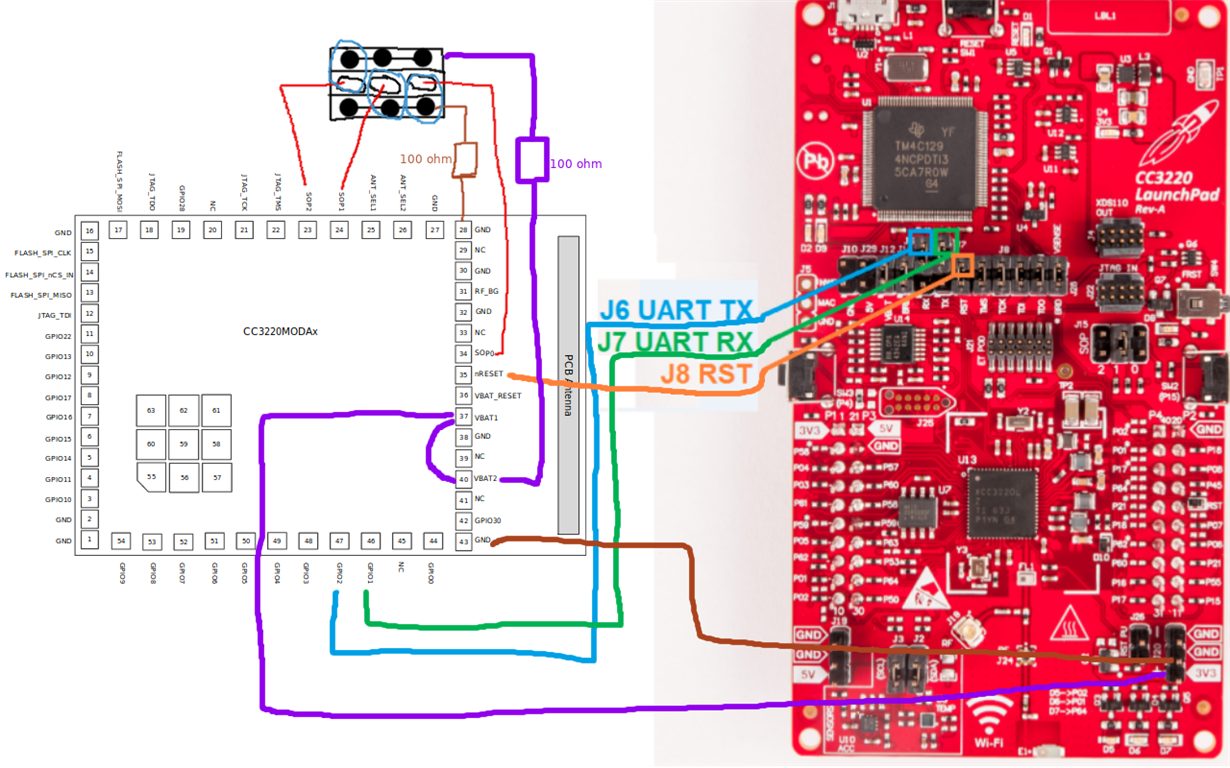Other Parts Discussed in Thread: CC3220SF-LAUNCHXL, CC3220SF, CC3220MOD, UNIFLASH, BEEPROG2, TMDSEMU110-U
Hello there!
Could you tell me the minimum requirements for CC3220MODASF12MON launching? Which pins should I pull up and pull down with the exception of power and ground pins?
And the second question is about flash firmware. In case of developer board CC3220SF-LAUNCHXL I don't have any problems, but how can I flash firmware into CC3220MODASF12MON? I have read some ways in your guide (www.ti.com/.../swra568.pdf), but I wonder which one is the most easiest to try it with single instance, not mass production. It seems to me that the most easiest way is described in section "5.4 UART Hardware Connection Using the CC3220 LaunchPad". I can't understand your designation on "Figure 4. CC3220 LaunchPad". Because my board has different pins' numbers from shown on the figure there, although these boards are called similarly. Which pins should I really connect? J6, J7, J8 are not the same on these figures, as you can see. I would be very appreciate if someone shares his/her configuration for flash firmware with some description or/and photos. I need a starting point to launch CC3220MODASF12MON with my firmware, which I wrote using CC3220SF-LAUNCHXL.








